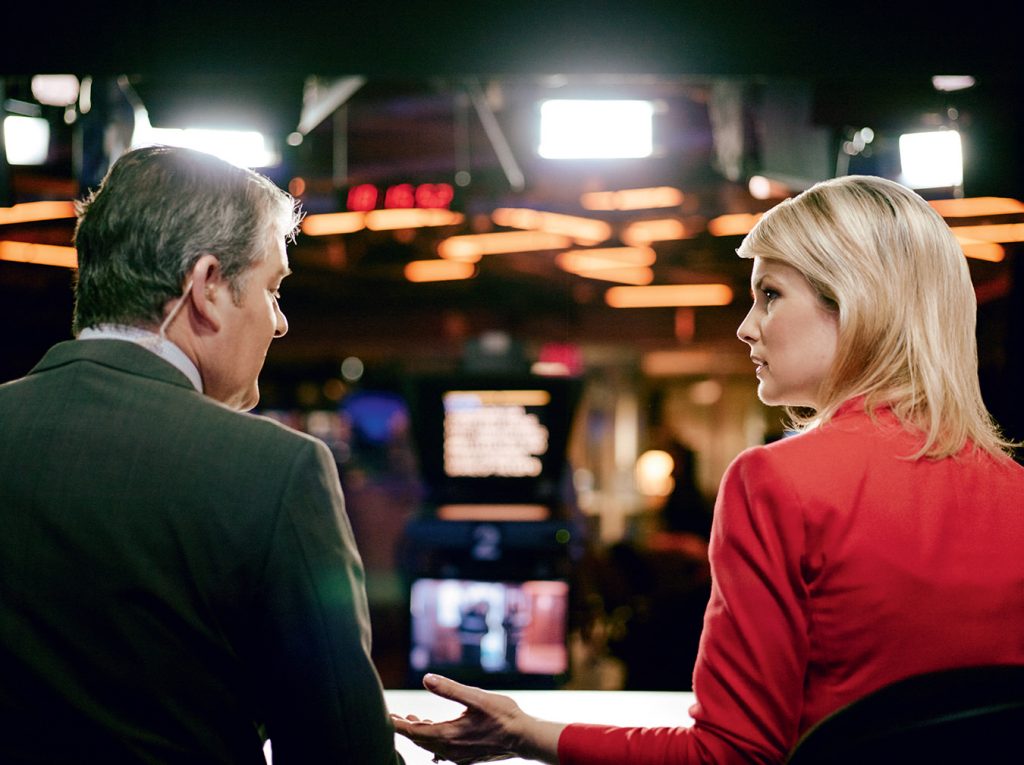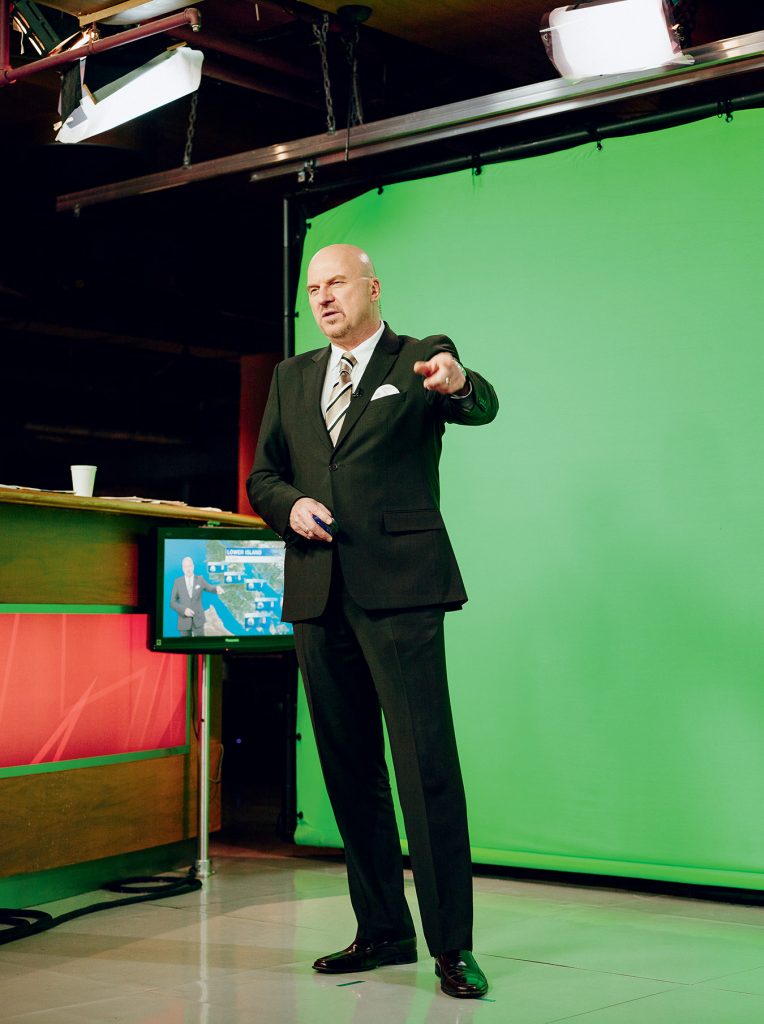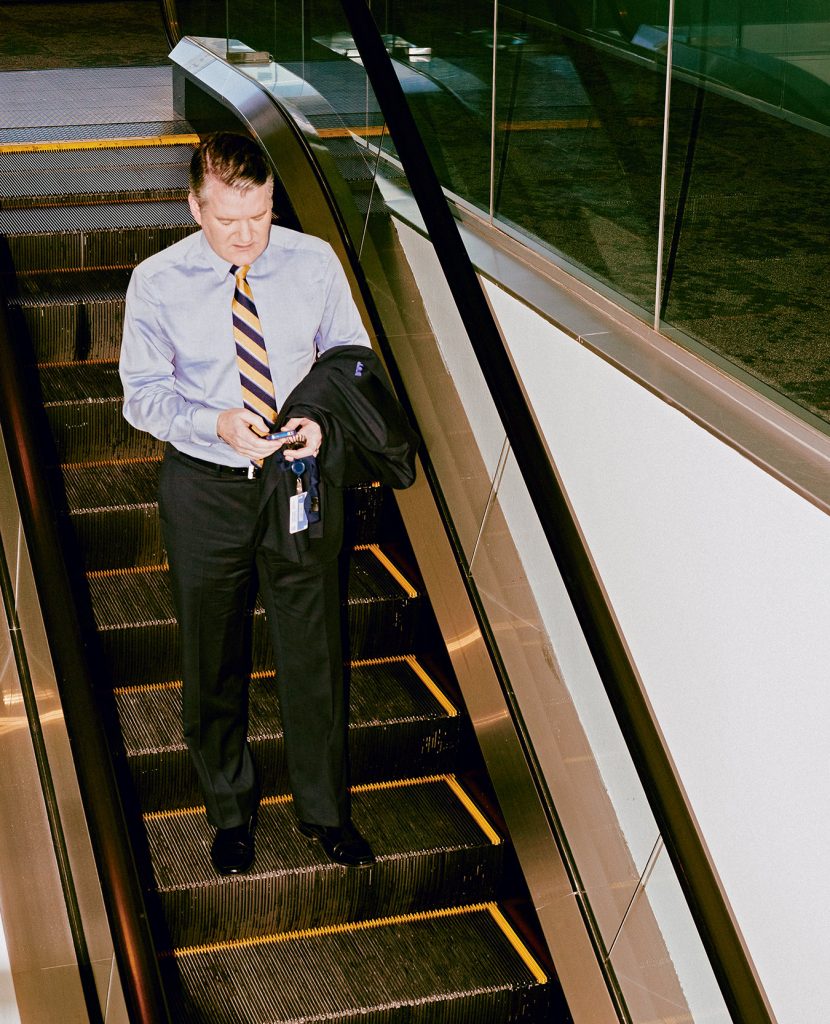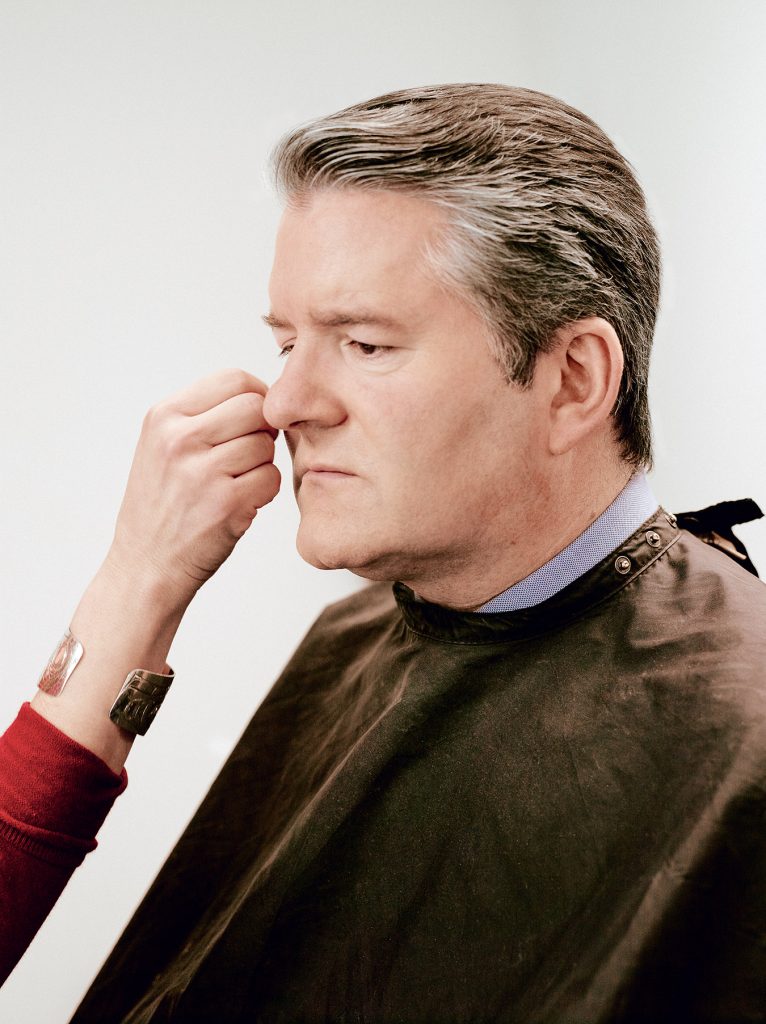It is a chilly, wintry in a Vancouver kind of way afternoon. A small crew—a camera operator who is also a director, a producer, and two “actors” sent by the United Way, one an elderly man, the other a young boy armed with a soccer ball—are centred on CTV News Vancouver anchorman Mike Killeen. He takes just five minutes to perfect the lines he is to read for a public service announcement that will air on his television channel several times weekly, leading up to a special fundraising event. The performance is genuine, easygoing, and redolent of both approachability and authority, qualities that are apparent during Killeen’s on-air appearances at noon with Coleen Christie and at 6 p.m. with Tamara Taggart.
The on-air personalities, though, are really just the tip of a large iceberg. Christie doesn’t need more than five minutes of conversation, between busily prepping her noon script and monitoring a blizzard of details, to say, “This is the most pure form of teamwork there is, I think. No single part can work without the others, and the whole thing falls apart if one element goes awry.” Christie, in fact, arrives early each day, since she has the noon news to do with Killeen, and then the entire 5 p.m. newscast to do as a solo anchor. But there is plenty of activity, and many people are on the ground before any anchors arrive. “There are elements of the noon and the 6 p.m. broadcasts that come into play at 5, but really the entire thing is organized differently, the priorities for the types of stories is different, and we have a different approach to the tone of the show,” Christie says. She has her hands full, but no detail is too small. At one stage on the noon show, she walks quickly off set to discuss an adjective being used in the teleprompter script, and suggests to CTV News at Noon producer John Scott that the word be changed. His response is simple: “Yes, make the change, but get it into the teleprompter, we have 90 second to air.” Keri Adams, who arrives mid-afternoon, is the breaking news anchor for both 5 p.m. and 6 p.m. broadcasts, anchors the 11:30 p.m. news, and essentially packages all of the day’s events into a crisp and cogent half-hour to wrap up the day. It all gets done, and the reading is pitch perfect, a good example of how tightly organized, highly constructed, but ultimately fluid the entire news production effort is.
Killeen is prepping for the noon news show, and muses about the work, as makeup and that day’s wardrobe are executed. “Today’s news began yesterday,” he says as he chooses the tie with which to accent his suit. “The anchors here like to get their hands dirty, to really know the stories and help bring them to the viewer the best way possible. And it really helps that we know each other, can anticipate each other, even on the air.” He echoes what Coleen Christie noted earlier, saying, “It is a great team of reporters, helicopter, and sat truck. Basically all of our resources are dedicated towards getting the news quickly and accurately.” He walks back to the anchor desk, looks around, and then sits down to examine the script one final time. The noon broadcast is about to begin, and the air becomes quietly electric, everyone in the place focusing on their individual assignments. Killeen walks onto the set, and when asked if he still gets any butterflies, he says, simply, “No, not really. You need to concentrate, be prepared—but not nervous, not anymore.”
“This is the most pure form of teamwork there is, I think. No single part can work without the others, and the whole thing falls apart if one element goes awry.”
This day, the show is as highly calibrated as any other. But with Vancouver dealing with its first homicide of 2014, the top breaking news story is easy to determine. Each segment of the newscast is timed to the second, with fade-outs, recorded reports, live street reports, and walk-ons by the weather and sports journalists (in this case Marke Driesschen and Perry Solkowski), all adroitly managed, micro-managed, really by the producer and director. Michael Kuss is the meteorologist, handling all three of the day’s last newscasts. Those earpieces you see are not at all for show. A blizzard of information is coming through the control room, and everyone is aware at all times of the exact timing for each segment. The anchors are counted in, and the whole thing appears so easy, even if you observe it from a few metres away. Still, if you had headphones on in the control room, it would be much like listening to a foreign language, Chopper 9 providing entry and exit shots of the city while the control room producer is rattling off information and calls to action: “Roll yellow and dissolve,” “Hot change in three,” “Roll red,” “Nine seconds for this,” “We are smack on time”.
Les Staff is the news director. He orchestrates the overall plan, and sustains a vision for what CTV News really is. “We always keep in mind how the public interest is best served. I have a specific kind of viewer profile in my mind, and we always think in terms of, how will that person react to, and use, the news we are providing?” During the 2 p.m. production meeting, when the lineup for the 6 p.m. news is discussed in great detail, Staff objects to two stories that have been put forward: “I do not see this reaching the bar we have set, in terms of serving the public interest.” Managing editor and assistant news director Ethan Faber responds with ideas about how the particular story would reach the bar. In this case, it is about a stalking victim, and it is agreed that until such time as actual charges are laid, it is more prurient interest than hard news. Tamara Taggart weighs in on the discussion, saying, “It is hard to see how this story works, unless there are more hard facts and less of a gossip angle.” Coleen Christie says, quietly, “You can see how it really is impossible to do this except as a team.”
Later, Staff comments on the process. “We are fortunate to have three anchors who work so well together. They do a great job. And I will say Mike has great writing ability, something that helps the overall effort.” John Scott talks about CTV News at Noon after today’s broadcast is over: “All our resources are put into breaking news: the chopper, the reporters, monitoring the police and fire broadband, all the various news sources we receive from all over the world. But most important for us is local breaking news. It is where we want to be, for our community.” Staff agrees, in a separate conversation: “We changed the name from CTV BC to CTV Vancouver for a reason. This news effort is all about local news, and breaking news. The world is part of the context, of course, but I keep coming back to our typical viewer, and what that person is interested in, needs to know, day by day. That is who we are serving.” In fact, virtually all CTV affiliates are making this transition, as part of a commitment to the communities they live and work in.
It is 5:55 p.m. Coleen Christie is wrapping up her show, and the transition to 6 p.m. takes hold. Tamara Taggart does a last-second test, a directive goes out that “there are nine seconds left for that” and then another, “30 seconds,” and then a formal countdown to the 6 p.m. news. Mike Killeen surveys the scene, nods his head: “Here we go. All set.” He takes his place behind the anchor desk, cracks a joke, perhaps two, fields a question about a new app for cell phones, and then settles in. “Tonight’s top story,” he intones, and broadcast news seems to be reclaiming relevance, following its mantra. Local. News.















